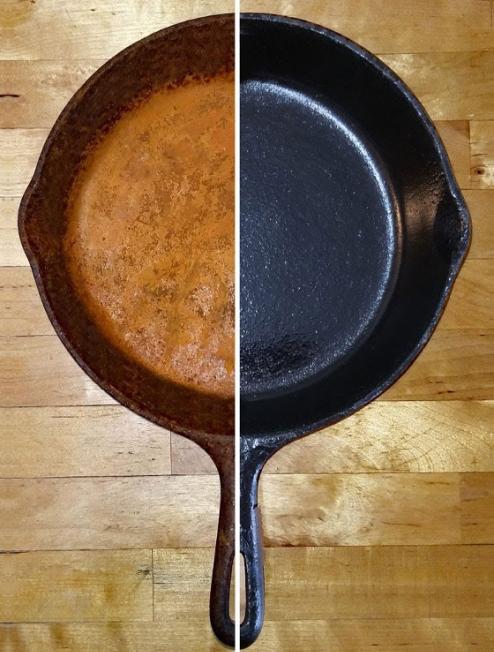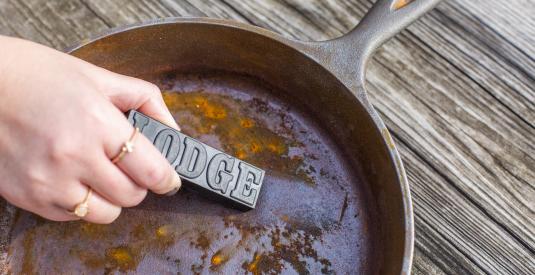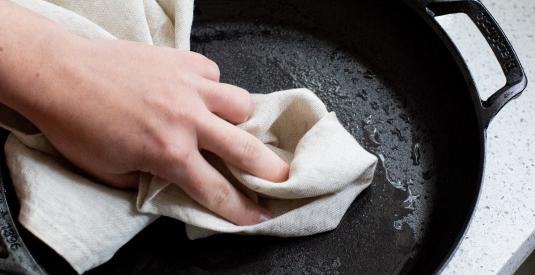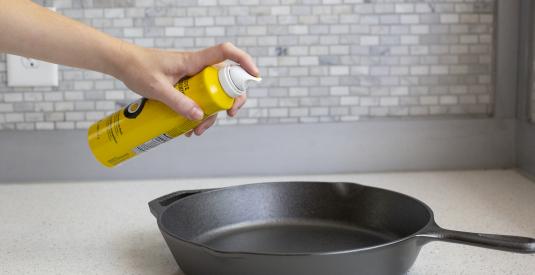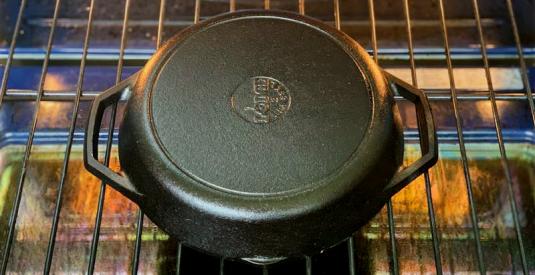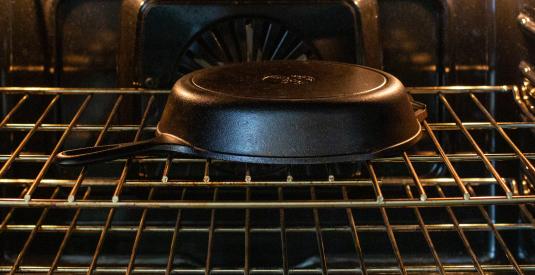How to Restore and Season a Rusty Cast Iron Skillet
It's easy! Whether you inherited vintage cast iron covered in rust or forgot to dry your skillet after washing, we'll show you a few simple steps that will restore your cookware to like-new condition. Let's take a look at how rust occurs and ways you can tackle it so you can start cooking again in no time.
Why does cast iron rust?
Our cast iron cookware is made of a mix of pig iron, steel, and alloys. Without the protective layer of carbonized oil called seasoning, cast iron is susceptible to rust. Even a well-seasoned pan can rust if it's left in the sink to soak, put in the dishwasher, allowed to air dry, or stored in a moisture-prone environment.
There's no need to throw away a cast iron skillet that's a little (or a lot) rusty. In fact, the next time you stumble upon some rusty pots and pans at an antique store or flea market, imagine the potential! Follow these five easy steps to restore cast iron cookware to its former glory.
How to remove rust on cast iron
A little (or a lot) of rust on your cast iron cookware is no reason to panic. Follow these simple steps to refurbish your cast iron finish, and you'll be cooking for decades to come.
Step 1
Scrub and wash your pan
Scour the rusty sections with steel wool or the Lodge Rust Eraser. Then wash the pan with warm, soapy water. This step may remove portions of the seasoning, but that's okay because we're preparing to re-season the pan.
Step 2
Dry thoroughly
Completely dry your cast iron skillet with a paper towel or lint-free cloth. You can place it on the stovetop on low heat for a few minutes to make sure it's completely dry.
Step 3
Apply oil
Add a very thin layer of cooking oil to the entire surface of your cast iron with a cloth or lint-free paper towel. Go easy on the oil—you want just a thin layer, not enough to drip or run when you tilt it. Thin layers are important for baking seasoning into the pan.
Step 4
Bake for 1 hour
Preheat your oven to 450–500 degrees F. Place aluminum foil on the bottom rack of the oven to catch any excess oil. Put your cookware upside down on the center rack. This helps prevent oil from pooling on the cooking surface. Bake for 1 hour.
Step 5
Cool in the oven
Turn the heat off and allow the cast iron skillet to cool in the oven. This allows the seasoning to further cure and adhere to the iron.
Seasoning and Rust FAQs
I tried to season my pan and now it’s sticky and gummy. Now what?
This will happen if too much oil is used to season your cast iron or if you didn’t heat it for a long enough time. It’s easy to fix! Just pop it back in the oven for another hour, or until the stickiness is gone.
My cast iron looks dull and burnt. How do I fix it?
Cast iron will become dull if it’s heated without any oil on the cooking surface, or if it’s heated without enough oil in the pan to cook the food. The dullness comes when the oil on the pan burns off before cooking. To fix this, just re-season the pan. If your cast iron still looks dull after re-seasoning it, repeat the process until it achieves a slight sheen.
Still have questions?
No worries! Chat with, call, or email our friendly Customer Care Associates.
